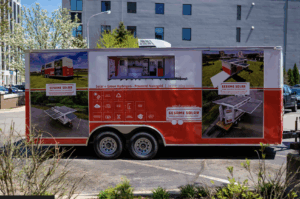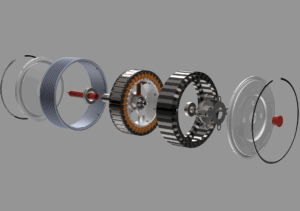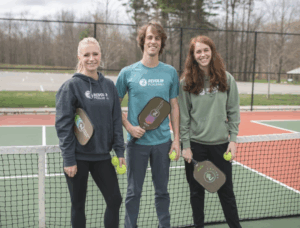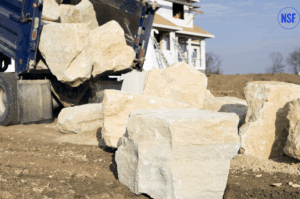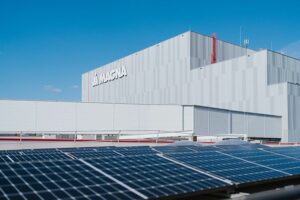
- Kim Kisner
- Business
- 04/01/2025
Environmental Science and Engineering Firm LimnoTech Talks Climate, Collaboration and Infrastructure Adaptation
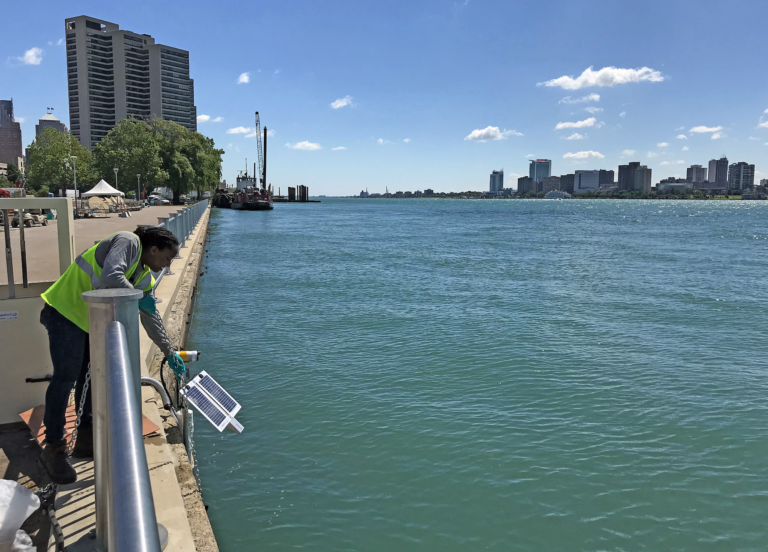
Ann Arbor, Michigan-based LimnoTech is an environmental science and engineering firm with more than 50 years of experience with water-related issues. The firm works with public agencies, private industry, and nonprofit organizations to provide science-driven solutions to complex water challenges.
SBN Detroit interviewed Brendan Cousino, PE, Principal and Senior Civil & Environmental Engineer at LimnoTech, to discuss the region’s most pressing water infrastructure challenges and where he sees the biggest opportunities for improvement.
Q: What is the impetus behind LimnoTech?
A: LimnoTech was founded by graduate students at the University of Michigan over 50 years ago. At the time, the country was just beginning to grapple with water pollution and how to treat contaminated waterways. This was also the early age of computing, and the founders began using computer-based modeling to better understand and solve environmental problems. Essentially, they were a crack team of water quality modeling experts who turned their research into a business that provides real-world environmental solutions.
Q: With increasing climate variability, how do you approach designing water management solutions that are both adaptable and future-proof?
A: To be future-proof, everything must be adaptable. We’re facing longer drought periods and increasingly intense rainfall events – sometimes in very short time frames. These extremes are becoming more common, and we’ve seen the consequences play out across Michigan. Our approach is to stay aligned with the latest climate science, evaluate the full range of projected conditions, and design infrastructure that can perform under both extremes.
Q: What are some of the most pressing water-related challenges facing Southeast Michigan today, and how do they compare to other regions?
A: Southeast Michigan is dealing with aging infrastructure systems that were built for historical conditions – not today’s climate realities. The recent Great Lakes Water Authority pipe break in Southwest Detroit is one example. Urban flooding and stormwater management are key issues, as is legacy pollution from our industrial past, compounded by new threats like microplastics, and PFAS.
At the same time, Michigan is unique in its abundance of freshwater, much of it in relatively clean condition. That puts a responsibility on all of us to protect these globally significant resources.

Q: Conversely, what are the biggest opportunities in Southeast Michigan for improvement and is there any low-hanging fruit?
A: In many ways, we’ve already picked the low-hanging fruit. For example, our region has been ahead of the curve when it comes to combined sewer overflow treatment. Investments made in the ’90s and early 2000s, such as retention basins and treatment systems, have made a real difference in improving water quality in the region.
Many of the pollutant sources in our stormwater are more broadly distributed. What’s next is being more strategic to plan infrastructure investment. We’re using better data and technology to monitor conditions. For example, we can now use robotics to inspect pipes so we don’t have to wait for them to fail, and real-time monitoring to inform operations during wet weather. That allows us to make smarter, targeted investments to prepare for changing conditions.
Q: What innovative strategies or technologies are emerging to help cities like Detroit handle extreme weather events and stormwater management?
A: Big data and real-time system operations are making a huge difference. With improved forecasting, operators can anticipate where rainfall is headed and adjust pump systems and treatment infrastructure in advance.
We’re also using high-resolution 2D modeling to understand where water will accumulate during storms. That allows us to plan better and pinpoint risk areas. It’s transforming how we manage and design urban stormwater systems.
Q: You worked extensively on the Ralph C. Wilson, Jr. Centennial Park on the Detroit riverfront. What specific water-related challenges did this project address, and how does it serve as a model for future waterfront development?
A: The site had a number of infrastructure issues. There was legacy sediment contamination from industrial activity that had to be remediated to support a healthy aquatic ecosystem. The bulkheads along the river also were failing, creating dangerous sinkholes. We replaced those with new shoreline stabilization measures.
We also incorporated aquatic habitat restoration into the project. The result is a world-class park that improves the riverfront for people while also addressing serious environmental concerns. It’s a great example of how community projects and infrastructure improvements can work hand in hand.
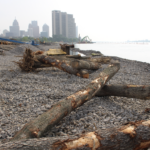
Q: Infrastructure in Detroit is aging and often not designed for today’s environmental pressures. What are the biggest gaps in water infrastructure that need to be addressed, and what solutions exist?
A: Much of the infrastructure was designed for storm conditions that were expected to occur once every 10 years. Now we’re seeing those types of storms almost every year, at least in some locations within the region. Our stormwater systems simply weren’t built to handle that level of intensity and frequency.
The biggest gap is funding. Many systems are at or beyond their design life, but utilities don’t have the financial resources to replace them quickly. We need to identify failure points, understand what’s most vulnerable, and prioritize investment accordingly.
Q: What role do community engagement and education play in developing effective climate resilience projects?
A: Community engagement is a core part of most projects we work on. It’s essential that the infrastructure improvements we make actually serve the people who live there. When communities have a voice in the design process, the outcomes are better.
Education also is key. Whether it’s installing a rain barrel, planting native species, or simply understanding how the stormwater system works, individual actions can add up. If we can manage even the first half inch of rainfall before it enters the storm system, we reduce the reliance on aging infrastructure.
Q: Looking ahead, what do you see as the biggest opportunities for improving climate resilience and sustainable water management in the next decade?
A: One major opportunity is the shift we’re seeing from purely regulatory compliance to voluntary corporate action. Many of our corporate clients are taking the initiative to reduce their water impacts. That’s a big change – and a positive one.
We’re also getting better at identifying vulnerabilities in the system and directing investments where they’ll have the most impact.
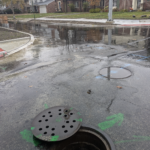
At the same time, we have to be honest about the limits of expanding infrastructure. Simply making pipes bigger isn’t always the solution and is extremely expensive. Instead, we’re seeing more green infrastructure—parks, greenways, infiltration basins—that manage water on site. Collaborating with private developers to maximize stormwater management on their properties is another big piece of the puzzle.
Be sure to subscribe to our newsletter for regular updates on sustainable business practices in and around Detroit.
Kim Kisner
- All
- Business
- Community
- Education
- Events
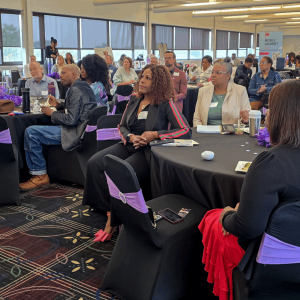
People First Economy is a statewide organization working to redefine what success in business looks like—where profitability, community wellbeing, and environmental stewardship go hand in hand. Through education, measurement tools, and peer networks, the nonprofit helps Michigan businesses integrate social and environmental values into everyday operations. SBN Detroit interviewed Carlos Martinez, president of People First Economy, about shifting business mindsets, the growing connection between sustainability and profitability, and...
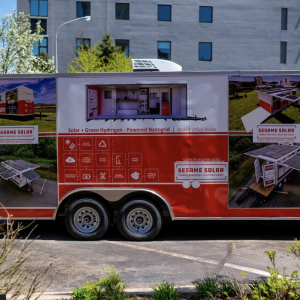
Sesame Solar, based in Jackson, Michigan, is pioneering a new model for clean, mobile power. The company’s self-generating “nanogrids” — compact, solar- and hydrogen-powered units that deploy in minutes — are designed to deliver renewable electricity anywhere it’s needed. From emergency response and telecom operations to defense and community resilience, the technology provides an alternative to the diesel generators that have long powered temporary and remote sites. SBN...
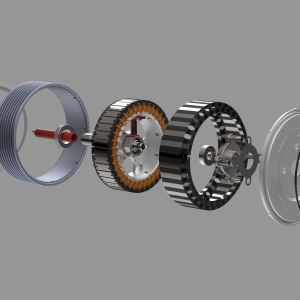
Farmington Hills-based Modal Motors designs and manufactures next-generation electric motors engineered for high torque density, simplified assembly, and scalability in the United States. The company’s transverse-flux architecture reduces reliance on rare-earth materials while improving efficiency and performance across mobility applications, including EVs, drones, and industrial equipment. By rethinking both motor design and manufacturability, Modal Motors aims to strengthen domestic supply chains and support the growing electrification industry. The...


